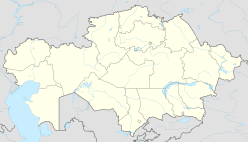.mw-parser-output .hidden-begin{box-sizing:border-box;width:100%;padding:5px;border:none;font-size:95%}.mw-parser-output .hidden-title{font-weight:bold;line-height:1.6;text-align:left}.mw-parser-output .hidden-content{text-align:left}@media all and (max-width:500px){.mw-parser-output .hidden-begin{width:auto!important;clear:none!important;float:none!important))You can help expand this article with text translated from the corresponding article in Russian. (October 2011) Click [show] for important translation instructions.
View a machine-translated version of the Russian article.
Machine translation, like DeepL or Google Translate, is a useful starting point for translations, but translators must revise errors as necessary and confirm that the translation is accurate, rather than simply copy-pasting machine-translated text into the English Wikipedia.
Do not translate text that appears unreliable or low-quality. If possible, verify the text with references provided in the foreign-language article.
You must provide copyright attribution in the edit summary accompanying your translation by providing an interlanguage link to the source of your translation. A model attribution edit summary is Content in this edit is translated from the existing Russian Wikipedia article at [[:ru:Жаманшин]]; see its history for attribution.
You should also add the template ((Translated|ru|Жаманшин)) to the talk page.
For more guidance, see Wikipedia:Translation.
| Zhamanshin crater | |
|---|---|
| Jaman şıñ | |
 Impact glass from the Zhamanshin impact site | |
| Impact crater/structure | |
| Confidence | Confirmed |
| Diameter | 14 km (8.7 mi) |
| Age | 900,000 ± 100,000 years Mid Pleistocene |
| Exposed | Yes |
| Drilled | Yes |
| Bolide type | Chondrite |
| Location | |
| Coordinates | 48°24′N 60°58′E / 48.400°N 60.967°E |
| Country | Kazakhstan |
| State | Aktobe Region |
Zhamanshin (Kazakh: Жаман шың, romanized: Jaman şıñ) is a meteorite crater in Kazakhstan. It is 14 kilometres (8.7 mi) in diameter and the age is estimated to be 900,000 ± 100,000 years (Pleistocene). The crater is exposed at the surface.[1]


